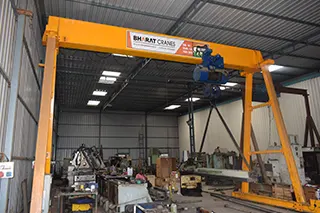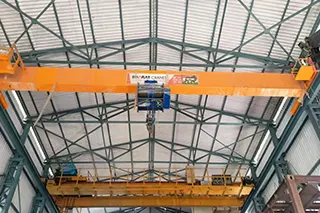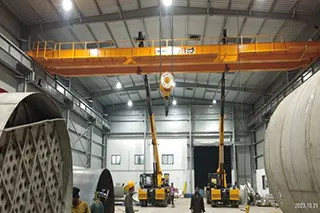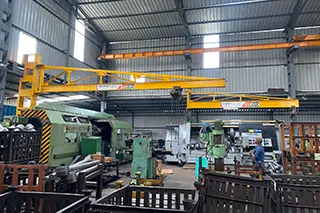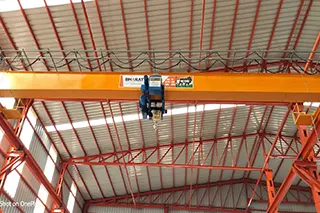Understanding Goliath Cranes or Gantry Cranes: What Are They?
In the world of heavy lifting and material handling, cranes play a critical role across various industries. Among the many types of cranes available, Goliath cranes, also known as gantry cranes, stand out for their versatility, strength, and ability to handle extremely heavy loads. But what exactly are Goliath cranes? And why are they such an integral part of industries like construction, manufacturing, shipbuilding, and more?
What is a Goliath Crane?
A Goliath crane, also commonly referred to as a gantry crane, is a type of crane that has a bridge supported by two sturdy legs, which run on rails or wheels at ground level. Unlike overhead cranes that rely on a ceiling or elevated structure for support, Goliath cranes are self-supporting, making them ideal for both indoor and outdoor operations.
These cranes are designed to lift and transport heavy loads over a large area without needing permanent infrastructure. The name "Goliath" aptly reflects the crane’s ability to handle massive weights, while "gantry" refers to the frame or structure on which the crane operates.
Key Components of a Goliath Crane
To understand how a Goliath crane functions, it's essential to know its primary components:
Bridge: The horizontal beam that spans the gap between the legs. The bridge houses the hoist and trolley system that moves along the length of the beam.
Legs: Two vertical or angled supports that stand on the ground, providing the crane with stability and allowing it to move along rails or wheels.
Hoist: The lifting mechanism attached to the bridge. It is responsible for raising, lowering, and holding the loads.
Trolley: The mechanism that moves the hoist back and forth along the bridge.
Rails or Wheels: Depending on the design, the legs of the crane move either on fixed rails or wheels, allowing the entire structure to travel over a wide area.
Types of Goliath or Gantry Cranes
There are several variations of Goliath cranes, each designed for specific industrial needs. The most common types include:
Single Girder Goliath Crane: This type features a single horizontal girder with the hoist running underneath. It is generally used for lighter loads and shorter spans.
Double Girder Goliath Crane: With two horizontal girders, this type offers greater lifting capacity and is used for heavier loads and larger spans. The hoist runs on rails between the two girders.
Semi-Gantry Crane: In this variation, one side of the crane runs on a rail at ground level, while the other side is supported by a wall or elevated structure.
Applications of Goliath Cranes
Goliath cranes are versatile and find applications across a wide range of industries. Some of the most common uses include:
Shipbuilding: Goliath cranes are essential in shipyards for lifting large sections of ships, engines, and other heavy components.
Manufacturing: These cranes are often used in heavy machinery manufacturing plants for moving massive parts and equipment.
Construction: On large construction sites, Goliath cranes help with lifting heavy materials, beams, and concrete segments, making them vital for projects such as bridges, tunnels, and buildings.
Warehousing: They are also used in large storage facilities for moving bulky items across vast spaces.
Benefits of Using a Goliath Crane
Flexibility: Unlike overhead cranes that are fixed to structures, Goliath cranes can operate in open areas, making them highly versatile for outdoor applications.
Cost-Effective: Goliath cranes eliminate the need for costly overhead runways and supporting structures, reducing installation and maintenance costs.
Heavy Lifting Capability: These cranes are engineered to lift extremely heavy loads, making them ideal for industries that require the movement of large, weighty objects.
Operational Range: Goliath cranes can cover large workspaces due to their mobility on rails or wheels, providing greater efficiency in material handling over wide areas.
Conclusion
Goliath cranes, or gantry cranes, are a powerful solution for industries that require the lifting and transport of heavy loads over expansive areas. With their robust design, versatility, and cost-effectiveness, they continue to be a popular choice for shipyards, construction sites, manufacturing plants, and more. Understanding how these cranes work and their potential benefits can help businesses choose the right type of Goliath crane for their specific needs. Whether it’s handling massive ship parts or lifting heavy construction materials, Goliath cranes deliver the power and efficiency needed for heavy-duty industrial operations.
